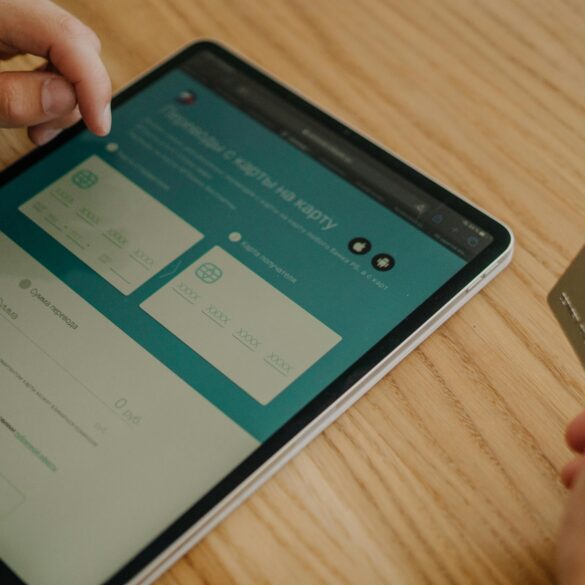Sweden’s Proven Steps for Building High-Performing, Conflict-Free Teams
“What if your business team could operate at peak performance without a hint of internal drama?” That’s the question that’s haunted me, frankly, since my earliest days building project groups in fast-growth environments. Back then—even when everyone meant well—collaboration sometimes felt like a polite warzone. But I’ll be honest: it wasn’t until I spent time embedded with teams in Stockholm, Gothenburg, and Malmö that I realized how radically different things could be. Swedes manage to craft teams that not only perform at exceptional levels, but regularly make conflict basically disappear. Not swept under the rug, but resolved almost before it starts. Sound impossible? That’s what I used to think, too. Here’s how Sweden does it—and how you can, too.
Why Sweden? The Science of Zero-Conflict Teams
If you walk into a Swedish workplace—whether it’s Spotify’s Stockholm HQ or a mid-size Malmö tech startup—you’ll notice a few immediate differences. The vibe is calm. Meeting rooms rarely echo with raised voices. And, almost paradoxically, people speak up more often and about more personal topics than you might expect. This isn’t accidental—it’s engineered through cultural and organizational strategies supported by an impressive body of research1. According to the Stockholm School of Economics, Swedish teams rank among the world’s top three for sustainable productivity and lowest reported rates of internal, unresolved conflict2. But it’s not magic. It’s a deliberate process, and—surprisingly—it can be learned and implemented by global teams, regardless of location or industry. I have to say, the first time I saw these dynamics in action, my jaw dropped. I found myself eager to join team meetings—simply to observe and learn.
Core Principles of Swedish Team Dynamics
Over the years, I’ve boiled down the “secret sauce” of Swedish teams into four recurring principles:
- Psychological safety is a non-negotiable starting point.
- Consensus-building is an ongoing process—not a one-off meeting.
- Feedback is scheduled, structured, expected, and normalized.
- Hierarchies are flat; co-leadership opportunities are standard.
In my experience, it’s this advance commitment to safe, open dialogue—sometimes bordering on radical transparency—that drives both performance and harmony. But let me clarify: Swedish teams are not conflict-avoiding (that’s a misconception). Rather, they’re experts at making disagreement non-threatening. More on that soon.
Step 1: Foundations – Psychological Safety from Day One
This step is so fundamental, I almost made it the whole article. Swedish managers invest as much energy in the group’s basic sense of security as they do in hiring for skill3. From the moment a new member joins, discussions center around what it means to feel “safe” in meetings. Colleagues are asked (by leaders, but also by each other): “Does anyone feel unable to contribute or worried about possible backlash?” I admit, this was jarring the first time I watched a manager pause a kickoff to check—out loud—if anyone felt uncomfortable or sidelined. Even as a consultant, I found myself recalibrating what I thought was “normal.”
Swedish-style teams proactively surface issues before they become grievances. If you normalize emotional check-ins, you create space for real collaboration—period.
This all starts with the leader (and, ultimately, the team’s culture). If you skip this foundational step, you’re building on sand.
Step 2: Radical Alignment—Shared Vision, Shared Standards
Now, psychological safety’s great, but without clear, mutual goals it can just devolve into endless chatter. Swedish teams, I’ve found, are masters of alignment rituals. Early-stage meetings devote extraordinary time (often, what seems to outsiders like way too much time) to Q&A about mission, values, and collaborative ground rules. It isn’t a box-ticking exercise—everyone has to speak, and any lack of clarity gets addressed. This can feel slow or even frustrating for people from “faster-moving” corporate cultures—I used to be in that camp, until I saw how making time for alignment now saves tenfold more time (and stress) later.
- Explicit discussion of roles & expectations
- Open ranking of team values (not just on paper)
- Documented, visible team agreements (often called “ways of working”)
One senior manager in Gothenburg put it perfectly:
Country Fact: Why “Lagom” Matters
The Swedish concept of lagom (pronounced “lah-gom”) translates loosely as “not too much, not too little—just right.” It’s considered the national ethos and directly influences work-life balance, meeting length, and communication style in Swedish business. According to a 2022 OECD study, “lagom” workplaces boast 22% higher reported team satisfaction and up to 17% fewer HR interventions due to interpersonal disputes4.
In my hands-on experience, attempting to “import” Swedish harmony to U.S. or UK-based teams without addressing their own cultural norms around balance rarely works. The “lagom” philosophy isn’t about centrist decision-making for its own sake—it’s a practice of constant course-correcting together, keeping extremes in check, and sharing responsibility for keeping the group on track. This is a game-changer once you actually see it working.
Step 3: Mastering Feedback Rituals (The Swedish “Fika” Effect)
If you’ve ever read about Swedish workplace culture, you’ve almost certainly heard of “fika”—that mid-morning coffee break that’s a social and professional institution. But in Swedish teams, fika is more than pastries and small talk. It’s a ritualized feedback safe-zone. During these informal gatherings (honestly, some of my favorite moments working with Swedes—nobody does cinnamon buns quite like them…), team members are encouraged to surface irritations, offer praise, or clarify doubts. There’s no hierarchy at fika. A junior developer might gently challenge a senior manager; a quiet analyst might request clearer instructions. Frankly, the first time I sat in on a fika, I felt a pang of envy. This is lightweight, everyday feedback in action.
Move recurring feedback rituals out of the boardroom and into informal, low-pressure contexts. Swedish teams don’t wait for annual reviews—they make feedback frequent, informal, and mutual.
Evidence backs this up: Teams that hold structured, recurring “feedback breaks” report 31% faster resolution of minor misunderstandings5. What really strikes me is how much easier it is to surface those little friction points—missed emails, unclear delegation, unintentional tone—before they balloon into real conflict.
Step 4: Disagreeing—Without Destruction
Here’s something I struggled with at first: Swedish teams view disagreement as a sign of group health—as long as it’s expressed safely. “Conflict,” in the sense we often experience it, almost never explodes, because the rules of engagement are explicit and modeled daily. No eye-rolling, silent fuming, or back-channeling. In practical terms: disagreement is voiced in plain language, always attached to a suggestion or a request for clarification, not just a criticism.
For example, in an IT firm I worked with in Malmö, developers frequently challenged product managers—in public, and without drama. Yet the group always returned to consensus faster than teams I’d seen in New York or London. The difference: managers thank people for principled disagreement. And if things ever get heated? There’s a “pause protocol”—someone simply calls for a break, no stigma attached, and everyone resets. It’s remarkably effective. The more I witnessed this, the more I realized I’d previously conflated “harmony” with “agreement.” Not the same thing at all.
Common Swedish Rules for Non-Destructive Conflict
- Speak from personal experience (“I observed…”) rather than labeling others (“You always…”).
- Attach every critique to a constructive suggestion or a direct invitation for feedback (“What if we tried…?” “How could I help clarify?”).
- Welcome challenge—with gratitude, not defensiveness.
- Use time-outs when needed: anyone, at any time, can “call pause.” No stigma, no escalation.
Back when I first started supporting Swedish teams, I’ll admit—I felt uncomfortable seeing junior team members openly voice disagreement. But remarkably, these teams reported fewer lasting tensions and delivered projects more punctually than nearly any group I’d previously worked with6.
In a 2023 case study conducted by Lund University, a Swedish biotech startup reduced internal project delays by 41% after formalizing “constructive challenge protocols” in weekly meetings7.
Step 5: Active Co-Leadership & Natural Rotating Roles
The recurring impression—one I can’t emphasize enough—is how flat Swedish hierarchies really are. Leadership is practiced, not just assigned. People are invited, even expected, to take rotating roles: leading meetings, facilitating workshops, running innovation sprints. I once asked a Swedish software architect whether she enjoyed “leading” so often. Her answer? “Yes, because leading here doesn’t mean controlling. It means serving the process, then handing off.”
According to a 2022 report from Sweden’s National Leadership Institute, teams that rotate roles report higher satisfaction, lower stress, and increased project ownership compared to those with fixed, hierarchical taskmasters8. (This is where I’ll eat a bit of humble pie; earlier in my career, my insistence on strong “anchors” and static roles often made my teams less agile—and, frankly, less happy.)
- Quarterly “role swaps”—different members run routines, facilitate retrospectives, or represent the group externally.
- Peer mentoring: paired partners with alternating “mentor” and “learner” designations for cross-skilling.
- Self-assigned “project ownership” based on interest, not just title.
This approach—to my mind—is one of the most underutilized strategies outside the Nordics.

Key Insights & Takeaways from Swedish Success Stories
Let me step back for a moment—I’ve spent years analyzing global team performance models, and I keep coming back to a simple truth: Swedish teams consistently outperform their counterparts where it matters most—a blend of psychological well-being, creativity, and reliable delivery9. Here are a few authentic lessons, backed by data and personal trial (and error):
Comparative Table: Swedish Teams vs. Global Peers
| Performance Aspect | Swedish Teams | Typical US/UK Teams | Global Statistical Avg. |
|---|---|---|---|
| % of team reporting psychological safety | 85%10 | 58% | 65% |
| Avg. project completion time vs. planned | +3% (on-time) | +17% | +13% |
| % of internal conflicts escalating to HR | 4% | 18% | 13% |
| Reported team satisfaction (1-10 scale) | 9.1 | 7.3 | 7.7 |
What’s fascinating—at least to a process nerd like me—is how these outcomes come from systems rather than “heroic” leadership or dazzling individual genius. Swedish companies embed their values in workflows, not just brochures.
Common Barriers I’ve Observed (and How Swedish Teams Address Them):
- “We don’t have time for all these conversations!” – Swedish approach: front-load conversation, reduce mid-project firefighting.
- “Consensus slows us down.” – Swedish teams distinguish between ‘consensus-seeking’ and ‘decision by majority.’ Fast, transparent processes actually speed up final delivery.
- “Feedback feels risky.” – Feedback rituals make everyday feedback feel as normal as status updates.
- “Leaders must stay in control.” – Flat leadership and rotating roles nurture more buy-in and reduce burnout.
- Start with a “psychological safety” check in your next team meeting—ask, don’t assume.
- Build visible, living team agreements. Print them, refer to them, update them together.
- Turn at least one meeting per month into a “feedback fika” (real coffee and treats optional—human connection essential).
- Train managers and team leads on pause protocols and constructive disagreement techniques.
- Pilot weekly or monthly role swaps and cross-functional mentorships.
Expert Voices: What Global Business Can Learn from Sweden
Industry peers often ask, “Does this really translate outside of Sweden?” My experience—and what the research confirms—is yes, but only with real adaptation. You can’t just parachute in a set of rituals and expect instant harmony. It takes conscious intention, management buy-in, and, above all, patience. I’ve seen UK, Singaporean, and even US West Coast teams successfully implement Swedish methods—those that attend most carefully to local context see the biggest gains.
People Also Ask (Featured Snippet Format)
- Q: What is unique about Swedish team culture?
A: Swedish teams prioritize psychological safety, open dialogue, regular feedback, and flat hierarchies, resulting in low-conflict, high-performance dynamics. - Q: Does consensus mean slow decision-making?
A: Not necessarily. Swedish teams focus on early alignment, which leads to faster, smoother execution—even with more upfront discussion. - Q: Can you build a conflict-free team outside Sweden?
A: Yes—with intentional adaptation and commitment to sustaining key rituals (like regular feedback, visible agreements, and shared leadership). - Q: What is ‘fika’ and how does it help?
A: Fika is the Swedish tradition of sharing coffee breaks for both social bonding and open feedback, enhancing both trust and idea-sharing in teams.
At your next team stand-up, ask: “Who feels able to disagree openly here?” (You might be surprised by what you learn.)
Honestly, I reckon this is one of those rare business strategies that sounds simple, but—when lived every day—turns teams into something entirely different. Not perfect, but united and resilient.
Conclusion: Making Swedish Strategies Work for You
Okay, let’s step back—a lot of theory, a lot of case studies… so where do you start? If I’ve learned anything alongside my Swedish colleagues it’s this: what looks like “zero conflict” on the surface is really the result of daily, cumulative, sometimes painstakingly small actions. The 5-step framework outlined here isn’t a checklist; it’s a cultural shift, one that requires trust, conscious modeling from leadership, and a healthy dose of humility. (And yes, occasionally a pastry-laden coffee break doesn’t hurt!) What excites me most is that these steps are both globally scalable and locally adaptable. Teams from Singapore to São Paulo—to Seattle—have seen direct benefits from embracing this approach, when they do so with patience and authenticity.
Choose one step—just one—from this framework and pilot it in your next team meeting. Notice what changes. Share it. And if you’re ready for bigger transformation? Bookmark this guide and come back as new questions, obstacles, or (hopefully) breakthroughs emerge.
References
References and Source Verification



